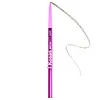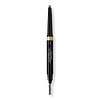What's inside
What's inside
 Key Ingredients
Key Ingredients

 Benefits
Benefits

 Concerns
Concerns

 Ingredients Side-by-side
Ingredients Side-by-side

Hydrogenated Coco-Glycerides
EmollientEuphorbia Cerifera Wax
Zinc Stearate
Cosmetic ColorantCopernicia Cerifera Wax
Synthetic Japan Wax
EmollientMica
Cosmetic ColorantPalmitic Acid
EmollientStearic Acid
CleansingTriethoxycaprylylsilane
Polyhydroxystearic Acid
EmulsifyingTocopherol
AntioxidantLecithin
EmollientEthylhexyl Palmitate
EmollientIsostearic Acid
CleansingIsopropyl Myristate
EmollientPolyglyceryl-3 Polyricinoleate
EmulsifyingWater
Skin ConditioningGlyceryl Caprylate
EmollientCaprylyl Glycol
EmollientIron Oxides
CI 77891
Cosmetic ColorantHydrogenated Coco-Glycerides, Euphorbia Cerifera Wax, Zinc Stearate, Copernicia Cerifera Wax, Synthetic Japan Wax, Mica, Palmitic Acid, Stearic Acid, Triethoxycaprylylsilane, Polyhydroxystearic Acid, Tocopherol, Lecithin, Ethylhexyl Palmitate, Isostearic Acid, Isopropyl Myristate, Polyglyceryl-3 Polyricinoleate, Water, Glyceryl Caprylate, Caprylyl Glycol, Iron Oxides, CI 77891
Synthetic Japan Wax
EmollientStearic Acid
CleansingHydrogenated Soybean Oil
EmollientHydrogenated Coco-Glycerides
EmollientZinc Stearate
Cosmetic ColorantPolybutene
Hydrogenated Vegetable Oil
EmollientCera Alba
EmollientMyristyl Myristate
EmollientCopernicia Cerifera Cera
EmollientPolyglyceryl-2 Triisostearate
EmulsifyingTriethoxycaprylylsilane
Polyhydroxystearic Acid
EmulsifyingVp/Eicosene Copolymer
Tocopherol
AntioxidantCitric Acid
BufferingCI 77491
Cosmetic ColorantCI 77492
Cosmetic ColorantCI 77499
Cosmetic ColorantMica
Cosmetic ColorantCI 77891
Cosmetic ColorantCeramide AP
Skin ConditioningSynthetic Japan Wax, Stearic Acid, Hydrogenated Soybean Oil, Hydrogenated Coco-Glycerides, Zinc Stearate, Polybutene, Hydrogenated Vegetable Oil, Cera Alba, Myristyl Myristate, Copernicia Cerifera Cera, Polyglyceryl-2 Triisostearate, Triethoxycaprylylsilane, Polyhydroxystearic Acid, Vp/Eicosene Copolymer, Tocopherol, Citric Acid, CI 77491, CI 77492, CI 77499, Mica, CI 77891, Ceramide AP
Ingredients Explained
These ingredients are found in both products.
Ingredients higher up in an ingredient list are typically present in a larger amount.
Ci 77891 is a white pigment from Titanium dioxide. It is naturally found in minerals such as rutile and ilmenite.
It's main function is to add a white color to cosmetics. It can also be mixed with other colors to create different shades.
Ci 77891 is commonly found in sunscreens due to its ability to block UV rays.
Learn more about CI 77891Hydrogenated Coco-Glycerides isn't fungal acne safe.
Mica is a naturally occurring mineral used to add shimmer and color in cosmetics. It can also help improve the texture of a product or give it an opaque, white/silver color.
Serecite is the name for very fine but ragged grains of mica.
This ingredient is often coated with metal oxides like titanium dioxide. Trace amounts of heavy metals may be found in mica, but these metals are not harmful in our personal products.
Mica has been used since prehistoric times throughout the world. Ancient Egyptian, Indian, Greek, Roman, Aztec, and Chinese civilizations have used mica.
Learn more about MicaPolyhydroxystearic Acid is a soft wax made from castor oil.
It is is a texture thickener, emulsifier, and film-former. Emulsifiers prevent ingredients from separating, such as oils and waters.
Polyhydroxystearic Acid may not be fungal acne safe.
Learn more about Polyhydroxystearic AcidStearic Acid is a fatty acid. It is an emollient, emulsifier, and texture enhancer.
As an emollient, stearic acid helps soften skin. It aids the skin's protective barrier by preventing water loss. It also provides a gentle cleansing effect without stripping away natural oils.
Stearic acid may also be used to enhance the texture of products. It can add volume and stabilize ingredients such as water and oil. This can help water and oil ingredients from separating.
Sources of stearic acid include animal or vegetable fats/oils such as coconut or shea. It can be naturally found in butter, cocoa butter, shea butter, vegetable fats, and animal tallow.
This ingredient may not be Malassezia folliculitis, or fungal-acne safe.
Learn more about Stearic AcidSynthetic Japan Wax isn't fungal acne safe.
Tocopherol (also known as Vitamin E) is a common antioxidant used to help protect the skin from free-radicals and strengthen the skin barrier. It's also fat soluble - this means our skin is great at absorbing it.
Vitamin E also helps keep your natural skin lipids healthy. Your lipid skin barrier naturally consists of lipids, ceramides, and fatty acids. Vitamin E offers extra protection for your skin’s lipid barrier, keeping your skin healthy and nourished.
Another benefit is a bit of UV protection. Vitamin E helps reduce the damage caused by UVB rays. (It should not replace your sunscreen). Combining it with Vitamin C can decrease sunburned cells and hyperpigmentation after UV exposure.
You might have noticed Vitamin E + C often paired together. This is because it is great at stabilizing Vitamin C. Using the two together helps increase the effectiveness of both ingredients.
There are often claims that Vitamin E can reduce/prevent scarring, but these claims haven't been confirmed by scientific research.
Learn more about TocopherolTriethoxycaprylylsilane is a silicone used to bind and stabilize ingredients.
As an emulsifier, it helps prevent ingredients from separating. This can help elongate the shelf life of products.
Triethoxycaprylylsilane is often used to coat mineral sunscreens ingredients to help give a better feel. It also helps reduce oxidative stress in sunscreens.
Learn more about TriethoxycaprylylsilaneZinc Stearate is the metal salt of stearic acid. It is a white solid used to bind, thicken, and lubricate products.
This ingredient is common in powder makeup, where it helps keep the powder together.
Zinc Stearate is hydrophobic and repels water.
This ingredient can be sourced from non-animal or animal sources. It is best to reach out to the brand to see where they source this ingredient from.
Learn more about Zinc Stearate